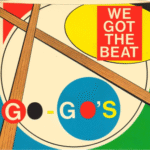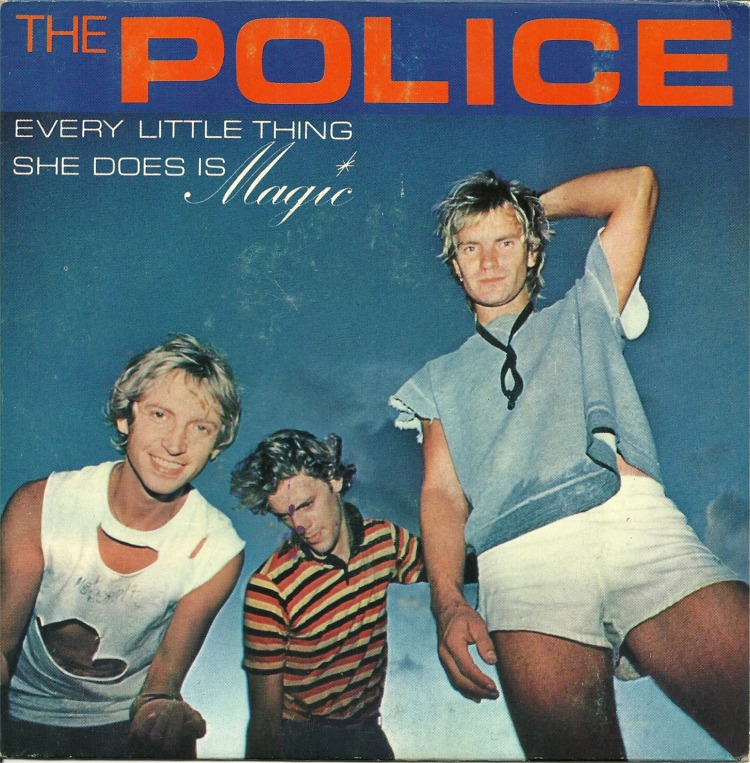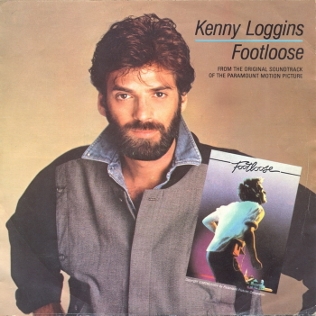 The 1980s marked a period of bold creativity in pop and rock music, and at the forefront of this wave was The Go-Go’s, an all-female band whose energy, wit, and musical talent challenged conventions while delivering anthems that remain timeless. Among their many hits, “We Got the Beat” stands as a defining track—not just for the band, but for an era of music that embraced youthful exuberance, infectious melodies, and unabashed fun. Released in 1981 on their landmark debut album Beauty and the Beat, the song encapsulates the spirit of the Go-Go’s: vibrant, rebellious, and undeniably catchy.
The 1980s marked a period of bold creativity in pop and rock music, and at the forefront of this wave was The Go-Go’s, an all-female band whose energy, wit, and musical talent challenged conventions while delivering anthems that remain timeless. Among their many hits, “We Got the Beat” stands as a defining track—not just for the band, but for an era of music that embraced youthful exuberance, infectious melodies, and unabashed fun. Released in 1981 on their landmark debut album Beauty and the Beat, the song encapsulates the spirit of the Go-Go’s: vibrant, rebellious, and undeniably catchy.
“We Got the Beat” is a track that balances pop accessibility with punk-infused energy. It is concise, upbeat, and built around an irresistible rhythm that commands movement. But beyond its danceable exterior lies a story of female empowerment, artistic innovation, and cultural impact that would influence generations of musicians and fans alike. The song is a testament to the power of melody, attitude, and timing—a perfect storm that cemented the Go-Go’s place in rock history.
The Go-Go’s: Pioneers of Pop-Punk Girl Power
The Go-Go’s formed in Los Angeles in the late 1970s, emerging from the city’s burgeoning punk scene. Unlike many of their male contemporaries, the band navigated the punk ethos with a pop sensibility, merging raw energy with melodic hooks. Their lineup—Belinda Carlisle (vocals), Jane Wiedlin (rhythm guitar), Charlotte Caffey (lead guitar), Gina Schock (drums), and Kathy Valentine (bass)—was groundbreaking. As an all-female ensemble writing their own songs and playing their own instruments, they defied the expectations of an industry that often relegated women to supporting roles.
“We Got the Beat” exemplifies this fusion of punk spirit and pop craftsmanship. Its origins lie in the band’s early days performing in LA clubs, where its infectious rhythm and communal energy made it an instant crowd favorite. The song’s live popularity eventually led to its studio recording, and upon release, it quickly climbed the charts, becoming a signature anthem for the band.
Lyrics and the Celebration of Youth
The lyrics of “We Got the Beat” are deceptively simple, yet they carry a potent message of joy, freedom, and communal experience. The song opens with the iconic lines:
“See the people walking down the street
They don’t know they’re looking at the Go-Go’s”
These lyrics establish a playful sense of self-awareness and confidence. The narrative captures the excitement of youth culture, the thrill of being part of a scene, and the power of music to unite and energize. The song’s chorus—
“We got the beat, we got the beat”
—functions as both a celebration and a mantra, encouraging listeners to surrender to rhythm and movement.
Beyond the infectious energy, the lyrics subtly reflect the band’s approach to empowerment. The Go-Go’s were asserting their presence in a male-dominated industry, and the song’s confident tone mirrors that assertion. While it may not be overtly political, “We Got the Beat” radiates self-assuredness and independence, qualities that resonated with a generation of young women seeking representation in popular music.
Musical Composition and Style
Musically, “We Got the Beat” is a masterclass in brevity, energy, and melodic construction. The track opens with a driving drumbeat from Gina Schock, immediately establishing forward momentum. Charlotte Caffey’s lead guitar riffs inject crispness and urgency, while Kathy Valentine’s bass lines provide both rhythm and melodic counterpoints. The guitars and bass interlock with tight precision, creating a sound that is simultaneously raw and polished.
Belinda Carlisle’s vocals are the perfect complement to the instrumental arrangement. Her clear, bright tone conveys excitement and authority, drawing listeners into the song’s infectious energy. Jane Wiedlin’s backing vocals enhance the texture, providing harmonies that lift the choruses and emphasize the communal, anthemic feel.
The song’s structure is concise, adhering to a tight verse-chorus-verse format that maximizes impact without overstaying its welcome. At just over two minutes long in its original single version, “We Got the Beat” demonstrates how efficiency can enhance energy—the brevity ensures constant motion, leaving listeners energized and eager for repeat listens.
Production and Sound Aesthetic
Produced by Richard Gottehrer, a seasoned hand in pop production, “We Got the Beat” balances the immediacy of punk with the polish of mainstream pop. Gottehrer emphasized clarity in the mix, ensuring that each instrument had its place while maintaining the overall drive of the performance. The recording captures the live energy of the band, reflecting their background as a tight, well-rehearsed ensemble capable of translating stage dynamism into the studio.
The production also highlights the duality of the Go-Go’s sound: raw enough to convey punk authenticity, but melodic and polished enough to appeal to radio audiences. This balance was crucial in making the song a crossover hit, bridging underground credibility with mainstream accessibility.
Impact on Pop Culture and Music History
“We Got the Beat” had a transformative effect on both the Go-Go’s career and the broader musical landscape. The song’s success propelled the band’s debut album, Beauty and the Beat, to the top of the Billboard charts, a remarkable feat for a self-contained all-female rock band. The track’s infectious energy and youthful exuberance made it a staple of radio playlists, music videos, and live shows.
Culturally, the song became a symbol of female empowerment in rock music. It demonstrated that women could not only perform in rock bands but could also write hits, command attention, and shape the sound of a generation. The Go-Go’s success paved the way for future female-led rock and pop acts, from the Bangles to Avril Lavigne, and even modern indie bands drawing inspiration from their confident, melodic approach.
Beyond the music industry, “We Got the Beat” infiltrated broader pop culture. Its infectious chorus has been used in commercials, television shows, and films, often as shorthand for youthful energy, fun, and rebellious spirit. The track’s legacy lies in its ability to evoke instant recognition, tapping into a collective memory of 1980s optimism and vitality.
Live Performances and Audience Connection
Live performances of “We Got the Beat” remain central to the Go-Go’s shows. The track’s concise, high-energy structure makes it ideal for audience participation, with fans singing along to the chorus and dancing in unison. The band’s performance style—dynamic, playful, and confident—enhances the song’s celebratory feel.
The live energy of the track mirrors its studio recording, capturing the infectious excitement that first made the song a hit in LA clubs. In concert, “We Got the Beat” functions as both a nostalgic anthem for older fans and an introduction for younger audiences discovering the Go-Go’s for the first time. Its ability to unite generations underscores its timeless appeal.
Songwriting Craft and Musical Innovation
While “We Got the Beat” may appear simple on the surface, its brilliance lies in the songwriting craft and subtle innovation. Charlotte Caffey’s chord progressions and riff construction demonstrate a keen understanding of tension and release, creating a sense of constant forward motion. The vocal interplay between Belinda Carlisle and Jane Wiedlin adds harmonic richness, while the rhythm section’s precise, punchy grooves maintain relentless drive.
The song’s innovation also comes from its attitude and delivery. By merging punk energy with melodic pop sensibilities, the Go-Go’s created a new template for female rock bands—energetic, confident, and irreverently fun. “We Got the Beat” is a study in how attitude and technical skill can coexist, producing music that is both enjoyable and culturally significant.
Why ‘We Got the Beat’ Endures
The enduring appeal of “We Got the Beat” lies in its universal energy, timeless melody, and cultural resonance. Its short, energetic format ensures immediate impact, while its infectious hooks and clever instrumentation keep it fresh even decades later. The song embodies a sense of liberation, joy, and confidence that transcends its era, making it as relevant today as it was in 1981.
The track also exemplifies the Go-Go’s ability to blend personality, humor, and musical skill into a cohesive whole. It is fun without being frivolous, energetic without being chaotic, and accessible without sacrificing artistry. These qualities allow it to remain a touchstone for fans of classic pop-rock and a source of inspiration for new musicians exploring the intersection of attitude and melody.
Conclusion: The Timeless Beat of Girl Power
“We Got the Beat” is more than just a hit single—it is a musical manifesto. With its infectious rhythm, witty lyrics, and unshakable confidence, it captures the spirit of a band that refused to be constrained by gender expectations or musical conventions. The Go-Go’s used the song to assert their presence in a male-dominated industry, creating an anthem that celebrates energy, independence, and communal joy.
Decades after its release, the track continues to resonate. Its influence can be felt across rock, pop, and indie music, and its enduring popularity in radio, live performance, and popular culture attests to its timeless quality. “We Got the Beat” is a reminder of the power of melody, rhythm, and attitude to captivate audiences and define an era.
With its vibrant energy, infectious hooks, and confident girl-power ethos, ‘We Got the Beat’ remains an enduring anthem—a song that gets listeners moving, smiling, and feeling the unstoppable pulse of The Go-Go’s spirit.


